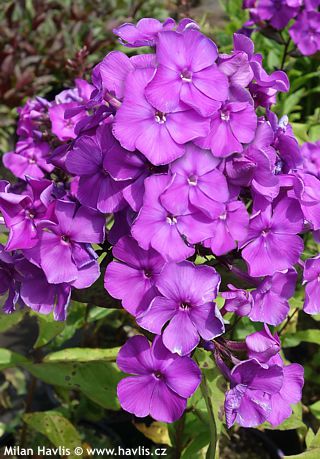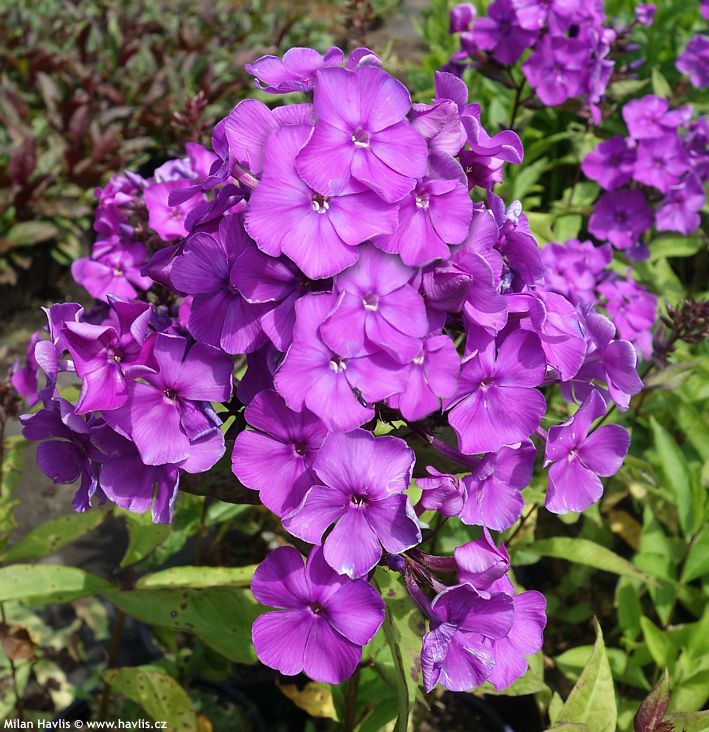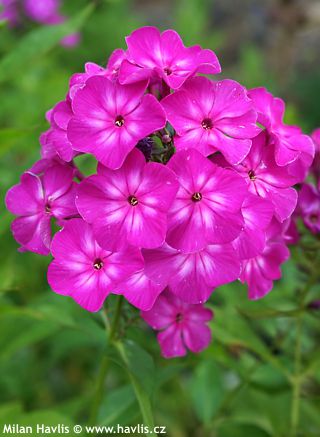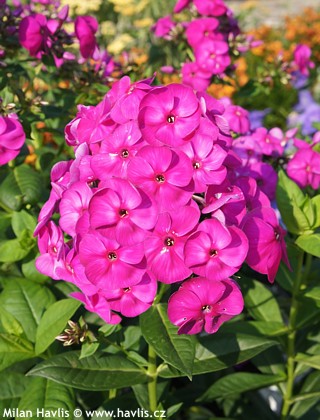Phlox (sk. paniculata) 'BLUE PARADISE' perennial phlox (panicle type)
size/type
mid-sized perennial,mid-sized perennial
usual height
0,8-1m
usual width
0,3-0,5m
leaves
deciduous broadleaf
colour of leaves
flowers
showy
colour of flowers
blooming time
July-September
location
full to partial sun
winter protection
for zone 5+6

for zone 7

categorized
Phlox
I love seeing that even so-called old-fashioned plants such as perennial phlox still attract breeders’ attention and they invest time and energy in crossbreeding and selecting new, hardier, healthier, and more beautiful varieties. Their popularity is proved by the fact that they occupy 3 large pages in the RHS Encyclopedia of Plants (not many plants can boast that).Description of the plant:
In case of Blue Paradise perennial phlox we need to consider ‘blue’ as poetic licence. Its flower colour varies considerably with light conditions: on a sunny day the flowers open from violet blue buds to dark purple pink flowers with violet hues, but on a cloudy day and at sunset the flowers do appear almost violet blue. They are fragrant and composed in small terminal panicles atop 80-90 cm tall, slender stems from July until early September. Leaves are lance-shaped, dark green, and prone to typical phlox diseases. Bred and introduced by Piet Oudolf from the Netherlands in 1990.Growing phlox is easy. It likes almost any garden soil, fertile or poor, but with enough nutrients the flowering will be heavier, and the plant will not suffer common phlox diseases. They are long-lived plants that will stay in your garden until you dig them out. Sunny location is preferred but will flower in partial shade, too. Hardy to about -34°C (USDA zone 4).
Last update 12-02-2020
QUICK PRICE OVERVIEW
CURRENTLY SOLD OUT
















